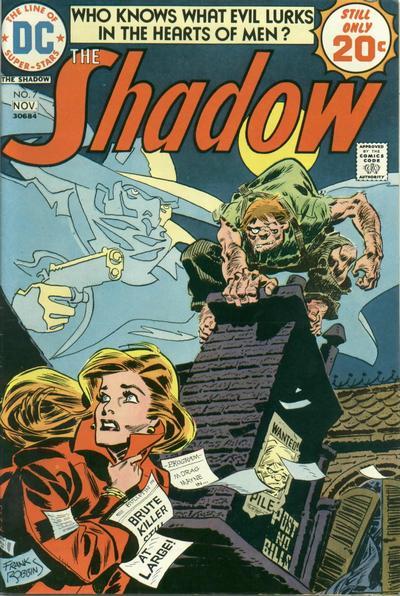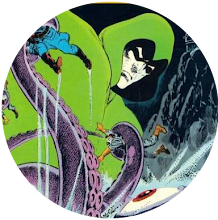 I was an undemanding child. Generally speaking, as long as a comic didn't star Nick Fury I was happy, which means a mag had to work really hard for me to hate it.
I was an undemanding child. Generally speaking, as long as a comic didn't star Nick Fury I was happy, which means a mag had to work really hard for me to hate it.
Clearly the snappily titled Amazing Adventures featuring Killraven Warrior of the Worlds, worked incredibly hard because, when I first got my hands on it, I instantly decided it was the worst comic I'd ever read; pretentious, dull and meaningless. Not only that but it bore a noticeable resemblance to the distinctly lame Apeslayer in Marvel UK's weekly Planet of the Apes title.
A quick check made it clear that, in those tales, some crafty personage had redrawn ape heads onto mutants and robots to make Killraven look like a Planet of the Apes series. At the time, such an act seemed a con but looking back on it, I greatly admire the ingenuity concerned and wish they'd continued with the policy after they finished the Apeslayer run. I'd have loved to have seen the adventures of the Apetastic Four or Tomb of Ape-ula.
But Killraven himself was another matter. For those who don't know, the series was based on the idea that, having failed to invade the Earth last time around, in HG Wells' War of the Worlds, the Martians who'd stayed at home had developed a cure for Earth's diseases and, in the early years of the 21st century, had re-invaded, this time succeeding. Now Killraven and his motley band of Freemen were battling to liberate their world from the Martians.
On top of so many words being used to say so little, there's the problem that the people in Killraven don't speak like people. They speak like poets would if poets spoke like people imagine poets speak. Even this issue's derelict sailor speaks like he majored in philosophy before becoming a booze-befuddled drunk.
And so we get the odd dichotomy, because, if anyone asked me was Killraven any good, in all honesty, I'd have to tell them no. If anyone asked me should they buy McGregor and Russell's entire run on the series, I'd have to tell them yes. Not just because it's a beautiful looking strip but because, although the thing didn't work, at least it tried to raise the American comic book to another level. And because not many comics of that time even tried to do that, it at least deserves some love for that.
Having decided Killraven was a total dud, I then changed my mind and went on to buy practically the whole run of Don McGregor and Craig Russell's series. After just two issues I was convinced it was the greatest comic ever, full of wisdom, insight and profundity, raising the American comic book to the status of genuine art form.
But Amazing Adventures #31, The Day The Monuments Shattered, was where my Killraven experience began. Reading it now as an adult, I find my opinion's swung completely back the other way. The story's just an unfocused mess. The Freemen hang around a bit, fight a monster for no noticeable reason, other than that it's there, and then kill the bad guys. What the monster's tossed into the mix for, I don't know. It just seems to be there for the sake of throwing yet another element into a story that already has two bad guys for our heroes to fight.
What never occurred to me as a kid was that the golden arches that feature so prominently in this tale are meant to be the McDonalds logo. Therefore, this tale's making a point about McDonalds, or fast food, or the consumer society, or something.
Isn't it?
The only problem is I can't figure out what that point is. And that's the trouble I have with Killraven these days which is that it seems to me that, ultimately, Don McGregor didn't actually have an awful lot to say but insisted on saying it in as many words as he possibly could.
I also wonder how Craig Russell felt about the whole thing. He was producing some of the finest art you'll ever see in a comic book, only to see McGregor plastering captions and speech balloons all over every single millimetre of it.
On top of so many words being used to say so little, there's the problem that the people in Killraven don't speak like people. They speak like poets would if poets spoke like people imagine poets speak. Even this issue's derelict sailor speaks like he majored in philosophy before becoming a booze-befuddled drunk.
And so we get the odd dichotomy, because, if anyone asked me was Killraven any good, in all honesty, I'd have to tell them no. If anyone asked me should they buy McGregor and Russell's entire run on the series, I'd have to tell them yes. Not just because it's a beautiful looking strip but because, although the thing didn't work, at least it tried to raise the American comic book to another level. And because not many comics of that time even tried to do that, it at least deserves some love for that.





































































































